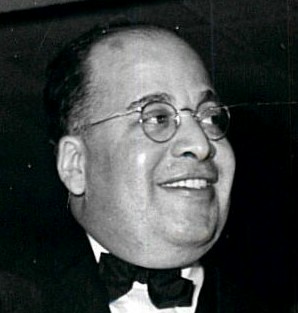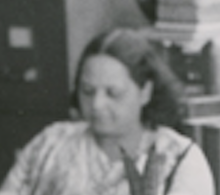Related Research Articles

Arturo Alfonso Schomburg, was a historian, writer, curator, and activist. He also wrote many books. Schomburg was a Puerto Rican of African and German descent. He moved to the United States in 1891, settling in New York City where he researched and raised awareness of the contributions that Afro-Latin Americans and African Americans have made to society. He was an important intellectual figure in the Harlem Renaissance. Over the years, he collected literature, art, slave narratives, and other materials of African history, which were purchased to become the basis of the Schomburg Center for Research in Black Culture, named in his honor, at the New York Public Library (NYPL) branch in Harlem.

John Edward Bruce, also known as Bruce Grit or J. E. Bruce-Grit, was an American journalist, historian, writer, orator, civil rights activist and Pan-African nationalist. He was born a slave in Maryland; as an adult, he founded numerous newspapers along the East Coast, as well as co-founding the Negro Society for Historical Research in New York.
John Henrik Clarke was an African-American historian, professor, prominent Afrocentrist, and pioneer in the creation of Pan-African and Africana studies and professional institutions in academia starting in the late 1960s.

The Schomburg Center for Research in Black Culture is a research library of the New York Public Library (NYPL) and an archive repository for information on people of African descent worldwide. Located at 515 Malcolm X Boulevard between West 135th and 136th Streets in the Harlem neighborhood of Manhattan, New York City, it has, almost from its inception, been an integral part of the Harlem community. It is named for Afro-Puerto Rican scholar Arturo Alfonso Schomburg.
Jesse Edward Moorland was an American minister, community executive, civic leader and book collector.

Dorothy Louise Porter Wesley was a librarian, bibliographer and curator, who built the Moorland-Spingarn Research Center at Howard University into a world-class research collection. She was the first African American to receive a library science degree from Columbia University. Porter published numerous bibliographies on African American history. When she realized that the Dewey Decimal System had only two classification numbers for African Americans, one for slavery and one for colonization, she created a new classification system that ordered books by genre and author.

John Preston Davis was an American journalist, lawyer and activist intellectual, who became prominent for his work with the Joint Committee on National Recovery (JCNR). In 1935, he co-founded the National Negro Congress, an organization dedicated to the advancement of African Americans during the Great Depression.
John Glover Jackson was an American Pan-Africanist historian, lecturer, teacher and writer. He promoted ideas of Afrocentrism, atheism, and Jesus Christ in comparative mythology.
Willis Nathaniel Huggins was a historian and social activist. He was one of the earliest proponents of teaching African and African-American history in American schools.
Afrocentric education refers to a pedagogical approach to education designed to empower people of the African diaspora with educational modes in contact and in line with the cultural assumptions common in their communities. A central premise behind it is that many Africans have been subjugated by having their awareness of themselves limited and by being indoctrinated with ideas that work against them and their cultures.
The American Negro Academy (ANA), founded in Washington, DC in 1897, was the first organization in the United States to support African-American academic scholarship. It operated until 1928, and encouraged African Americans to undertake classical academic studies and liberal arts.
Levi Sandy Alexander Gumby was an African-American archivist and historian. His collection of 300 scrapbooks documenting African-American history have been part of the collection of Columbia University since 1950 as the Alexander Gumby Collection of Negroiana. Gumby was also the proprietor of a popular bookstore during the Harlem Renaissance, where he was host of a salon. Gumby's passion for collecting earned him the nicknames "The Count" and "Mr. Scrapbook".

Jean Blackwell Hutson was an American librarian, archivist, writer, curator, educator, and later chief of the Schomburg Center for Research in Black Culture. The Schomburg Center dedicated their Research and Reference Division in honor of Hutson.

Catherine Allen Latimer was the New York Public Library's first African-American librarian. She was a notable authority on bibliographies of African-American life and instrumental in forming the library's Division of Negro History, Literature and Prints.

Robert A. Pelham Jr. was a journalist and civil servant in Detroit, Michigan and Washington, D.C. Along with his brother, Benjamin, and others, he was a founder and editor of the Detroit Plaindealer in 1883. He served in a number of public positions in Michigan, and later worked at the United States Census in Washington, D.C. In Washington, he continued to work as a journalist, and late in his life edited the Washington Tribune, a weekly paper. He was also a member of a number of civil rights organizations, including the National Afro-American League, the American Negro Academy, and the Spingarn Medal Commission.
Dr. Vanessa K. Valdés is an author, educator, writer, editor, historian. For seventeen years, she was a professor of Spanish and Portuguese at the City University of New York. She is a Puerto Rican of African descent. She is the author of three books, including Diasporic Blackness: The Life and Times of Arturo Alfonso Schomburg (2017). Schomburg was one of the founding fathers of Black History in North America, and the father of the Global African Diaspora. She has also written Oshun's Daughters: The Search for Womanhood in the Americas (2014). In Oshun's Daughters she examines African Diasporic sense of womanhood, examining novels, poems, etc., written by Diaspora women from the United States, the Caribbean, and Brazil. Writings that show how these women use traditional Yoruba religion as alternative models for their womanhood differing from western concepts of being a woman. With David Pullins, she is the co-author of Juan de Pareja, Afro-Hispanic Painter in the Age of Velázquez (2023), which accompanied its exhibition at The Metropolitan Museum of Art from March 27 - July 16, 2023.
Diana Lachatanere is an American archivist. She retired from the Schomburg Center for Research in Black Culture at the New York Public Library in 2013, where she held the position of assistant director for Collections and Services from 1995 to 2013, and Curator of the Manuscripts, Archives and Rare Books Division from 1988 to 2013. She was also the Manager of the Scholars-in-Residence Program, 1990–2013.
Henry Proctor Slaughter was an American journalist, printer, and bibliographer. Slaughter collected resources that documented African American history, with a special focus on the subjects of slavery, the abolitionist movement, and correspondence from African American leaders throughout the nineteenth and early twentieth centuries. His collection of over 10,000 books and other materials now forms the Henry P. Slaughter collection at the Atlanta University Center Robert W. Woodruff Library.
Pastor Argudín Pedroso, also known as Pastor Argudín Y Pedroso, was an Afro–Cuban portrait and genre painter, and teacher. He was internationally exhibited and was awarded the Order of Carlos Manuel de Céspedes by the Republic of Cuba, for his artistic merit.
The history of libraries for African Americans in the United States includes the earliest segregated libraries for African Americans that were school libraries. The fastest library growth happened in urban cities such as Atlanta while rural towns, particularly in the American South, were slower to add Black libraries. Andrew Carnegie and the Works Progress Administration helped establish libraries for African Americans, including at historically Black college and university campuses. Many public and private libraries were segregated until after the U.S. Supreme Court ruling of Brown v. Board of Education (1954).
References
- 1 2 3 Dodson, Barnett (October 21, 1911). "Select Society for Research". The Lexington Standard. Vol. 17, no. 12. Retrieved 13 January 2019.
- 1 2 3 Hoffnung-Garskof, Jesse (Fall 2001). "The Migrations of Arturo Schomburg: On Being Antillano, Negro, and Puerto Rican in New York 1891-1938". Journal of American Ethnic History. 21 (1): 3–49. doi:10.2307/27502778. JSTOR 27502778. S2CID 254487524.
- ↑ "Who founded the Negro Society for Historical Research and what was its purpose?". Papertrell. 1911-04-08. Retrieved 2019-01-13.
- 1 2 3 4 Sinnette, E.D.V. (1989). Arthur Alfonso Schomburg, Black Bibliophile & Collector: A Biography. African American life series. New York Public Library. p. 47. ISBN 978-0-8143-2157-7 . Retrieved 2019-01-14.
- ↑ "... Discussed by Great Scholar". Pittsburgh Courier. January 13, 1912. Retrieved 13 January 2019.
- ↑ "Honoring Arturo Schomburg's Afro-Latino Legacy". The New York Public Library. 2016-07-01. Retrieved 2019-01-14.